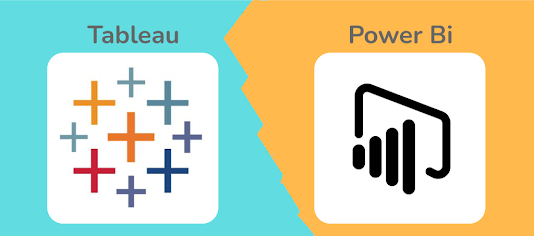Power BI vs Tableau
Power BI and Tableau are two of the
most popular business intelligence (BI) tools on the market. Both tools offer a
wide range of features for data visualization, reporting, and analysis.
However, there are some key differences between the two tools that may make one
a better fit for your needs than the other.
Power BI
- Pros:
- Easy to use
- Affordable
- Tightly integrated with
Microsoft products
- Good for handling large datasets
- Offers a variety of data
connectors
- Supports real-time data
streaming
- Can be used to create
interactive dashboards
- Cons:
- Not as powerful as Tableau for
data visualization
- Some features require additional
development or customization
- Not as well-suited for
large-scale enterprises
Tableau
- Pros:
- Powerful data visualization
capabilities
- Easy to create interactive
dashboards
- Well-suited for large-scale
enterprises
- Wide range of data connectors
- Supports real-time data
streaming
- Cons:
- More expensive than Power BI
- Steeper learning curve
- Not as tightly integrated with
Microsoft products
Gartner Quadrant
In Gartner's 2023 Magic Quadrant for Analytics and Business
Intelligence Platforms, Power BI and Tableau are both positioned as Leaders.
Power BI is ranked slightly higher than Tableau, but both tools are considered
to be excellent choices for BI.
Which Industry Prefers Which Tool?
Power BI is more popular in the enterprise sector, while
Tableau is more popular in the small and medium-sized business (SMB) sector.
However, both tools are used by a wide range of industries, including:
- Financial services
- Retail
- Healthcare
- Manufacturing
- Technology
Which Favors the Financial
Institutions?
Both Power BI and Tableau are well-suited for the financial
services industry. However, Tableau is often seen as a better fit for this
industry because of its powerful data visualization capabilities. Tableau's
ability to create interactive dashboards is especially valuable for financial
institutions, as it allows users to quickly and easily explore data and
identify trends.
Conclusion
Power BI and Tableau are both excellent BI tools, but they
have different strengths and weaknesses. The best tool for you will depend on
your specific needs and requirements. If you are looking for an easy-to-use
tool that is affordable and tightly integrated with Microsoft products, then
Power BI is a good choice. If you are looking for a powerful tool with
excellent data visualization capabilities, then Tableau is a good choice.
Here is a table that summarizes the key differences between
Power BI and Tableau:
|
Feature |
Power BI |
Tableau |
|
Ease of use |
Easy to use |
Steeper learning curve |
|
Pricing |
More affordable |
More expensive |
|
Integration with Microsoft products |
Tightly
integrated |
Not as tightly integrated |
|
Data visualization capabilities |
Good |
Powerful |
|
Dashboarding capabilities |
Good |
Excellent |
|
Data connectors |
Wide range of
connectors |
Wide range of connectors |
|
Real-time data streaming |
Supported |
Supported |
|
Large-scale enterprise capabilities |
Good |
Excellent |


Comments